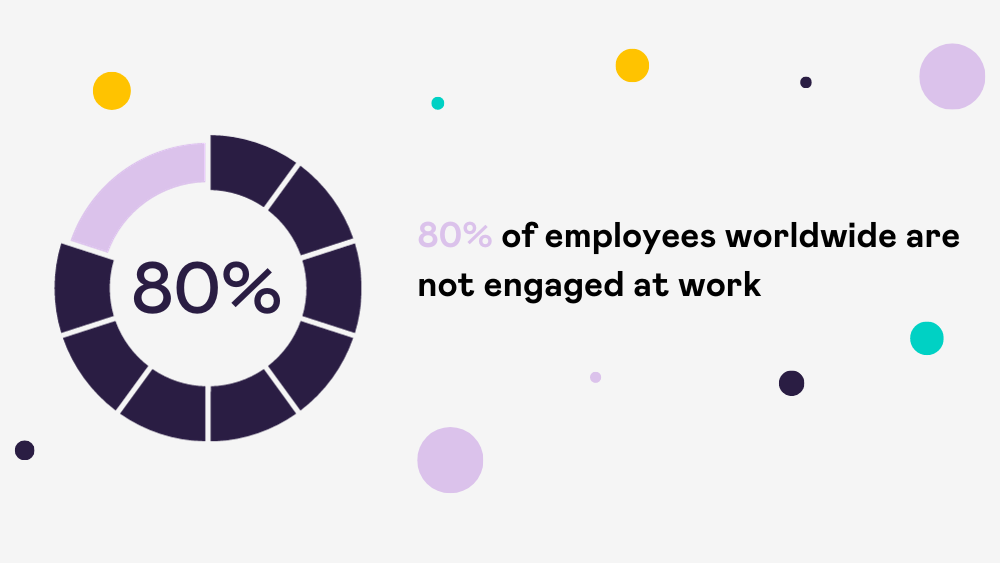Business performance often ignores team connection despite its importance. All effective managers know how important it is to ensure that employees feel valued and supported. However, there’s often a blind spot when it comes to team connection.
Social cohesion is incredibly powerful. A connected team can supercharge a business, including the bottom line. According to Forbes, highly engaged teams show 21% greater profitability.
While boundaries in the workplace are important markers of professionalism, there is great value in making friends at work. A sense of team connection at work can offer massive boons for organisations, as well as benefits for individual well-being.
Building connections in the work environment might not be your current priority. We’d like to illustrate why it does matter. A positive company culture doesn’t merely improve the well-being of your employees. It changes how people feel towards your company’s reputation, making your business more attractive to candidates in a competitive job market.
Connected teams support business objectives
Connected teams are well-placed to help your business achieve its goals. The CIPD reports that social cohesion can have a positive impact on team performance. Improving social cohesion is especially pertinent in large teams, virtual teams, project teams, and highly independent teams. When time together is reduced, it requires a real strategy to integrate participants. In a world of remote work, the importance of our social interactions has become unavoidable.
If you’re trying to build a high-performance team and you feel like you’re not hitting the expected height for your talent pool, the problem may well be a lack of cohesion and connection. Our software improves team sociability through automated prompts that lessen the burden for managers.

Retention rates improve when team connection does
We have seen a link between recognition and employee retention. When a team connects through positive feedback, both peers and managers benefit from a better communication system. This reduces the burden on admins and offers space for valuable peer-to-peer feedback and recognition while boosting feelings of confidence and well-being.
Gusto’s Community at Work report found that 37% of workers claim their top reason for staying at their company is working with a great team with strong connections.
Employee engagement is not a driver, it’s an outcome
Improving employee engagement is a gold standard strategy for most managers but do remember that it’s an outcome and not a driver. Meaning, it’s drivers like helping your teams connect that can make a real difference to your employee connection goals.
When you foster connected teams, you enhance the likelihood that your employees will engage with their work. The feelings of community, support, and friendship are fantastic drivers for engagement. TeamStage even reports that more than 60% of employees with a best friend in the workplace are twice as likely to achieve full engagement.
Mo helps teams grow and maintain their sense of belonging. Here are the key action points we have identified as a starting point to foster meaningful connections:
- Offer plenty of time to socialise, both in and outside working hours.
- Pay attention to connecting your hybrid and remote workers.
- Reward and recognise efforts to work collaboratively and with team spirit.
- Remember to embody a people-first and human-centric culture and leadership style.
- Make connecting easy with dedicated communication platforms, such as our Mo app.
What are the benefits of prioritising employee feedback?
Detailed and well-thought-out feedback can help employees and businesses become better versions of themselves. A study in the Harvard Business Review saw 72% of employees agreeing that they thought their performance would improve if their managers provided corrective feedback.
They also found that 92% of the respondents agreed that negative feedback is effective at improving performance as long as it is delivered appropriately. How you give feedback is just as important as giving it in the first place.

Everything You Need to Know About Employee Engagement
Get your complete guide on all things employee engagement
3 easy ways to boost team connection in 2024:
1. Identify the issues
Connection matters. And the modern workplace is very effective at creating distance between employees.
The first stage of improving employee connection is fact-finding. Take the time to chat to each of your team members and get a feeling for the issues.
Are your teams under too much pressure to find time to connect? Are there lots of new hires and unfamiliar faces? Are you failing to prioritise team building? Or are you struggling to help a hybrid or remote team come together?
Using employee engagement surveys are the first step in understanding the pain points in your workforce. But they’re useless if managers aren’t empowered to take the next step.
2. Employ engagement software
Once you have a firm grasp of your weaknesses, it’s time to solve them. Employee engagement software can be a useful tool in supporting your efforts. Boosting productivity can take the pressure off busy teams, while communication elements make it easier for teams to stay in touch.
Mo are specialists in rewards and recognition. We make it easy for managers to connect with their teams – and for team members to connect with each other. Sharing feedback, recognition, celebrations, and important moments easily and quickly enables us to make valuable connections throughout the day.
Bersin reports that 2% of payroll goes into recognition in the US, mainly recognition tenure, with 87% of companies having tenure-based reward programs, despite research showing that this drives very little value. Meanwhile, companies with a ‘recognition-rich culture’ vastly outperform others. The top 20% of companies getting it right achieve 31% less voluntary turnover.
3. Build a system that is braver than you
You might be convinced of the benefits based on data, but it can be hard for individual leaders or managers to implement changes in team structure.
Mo empowers managers to build better systems, thanks to automation and analysis. Mo provides the cues that trigger the routines that form the habits that will underpin your success. We’re here to help you design, instigate and reap the incredible cultural riches of the world’s highest-performing teams… one moment at a time.
It’s time to get started 👉 Click here

![[image] 4174782](https://mo.work/wp-content/uploads/2023/12/image-4174782-150x150.jpeg)


